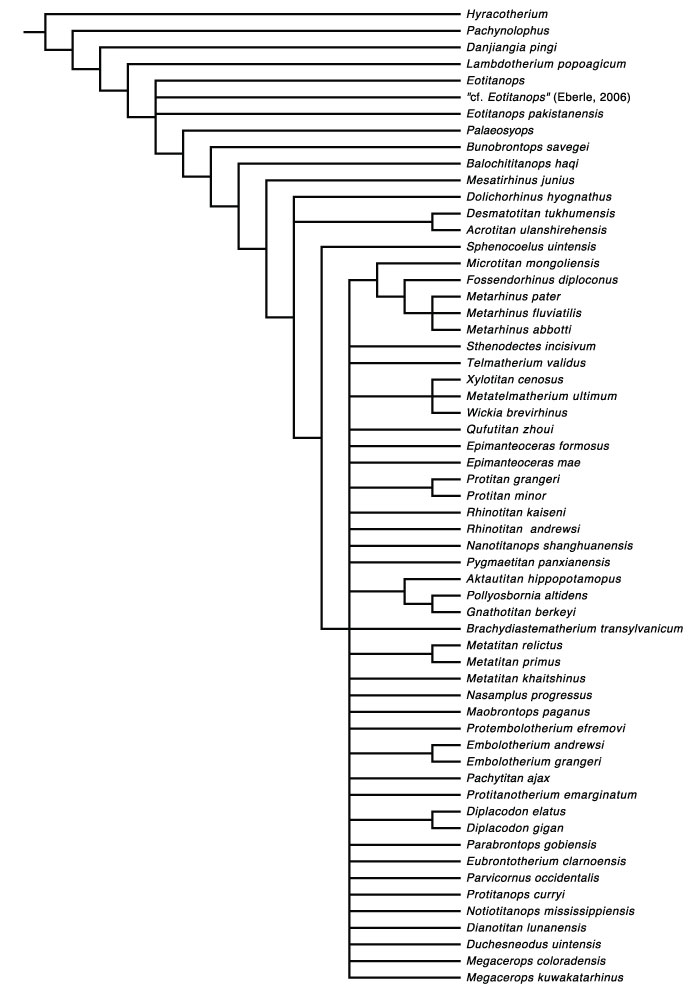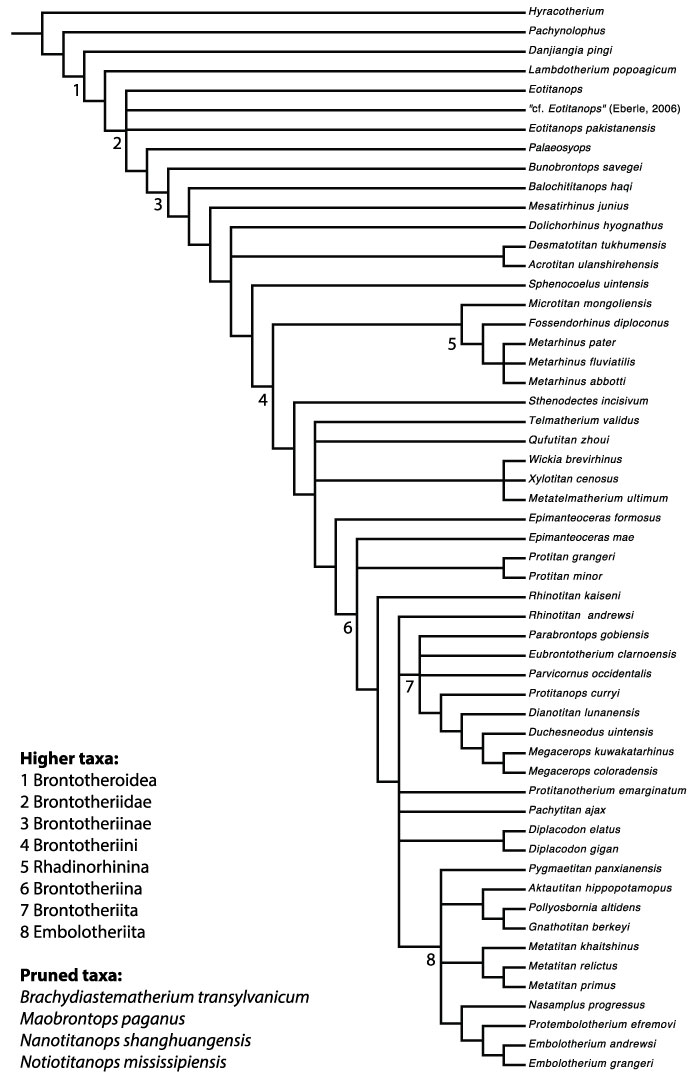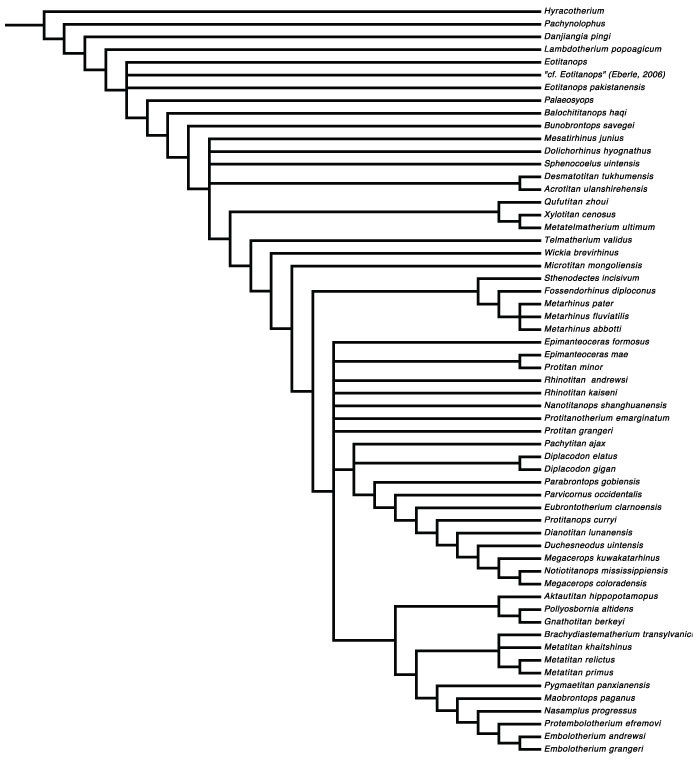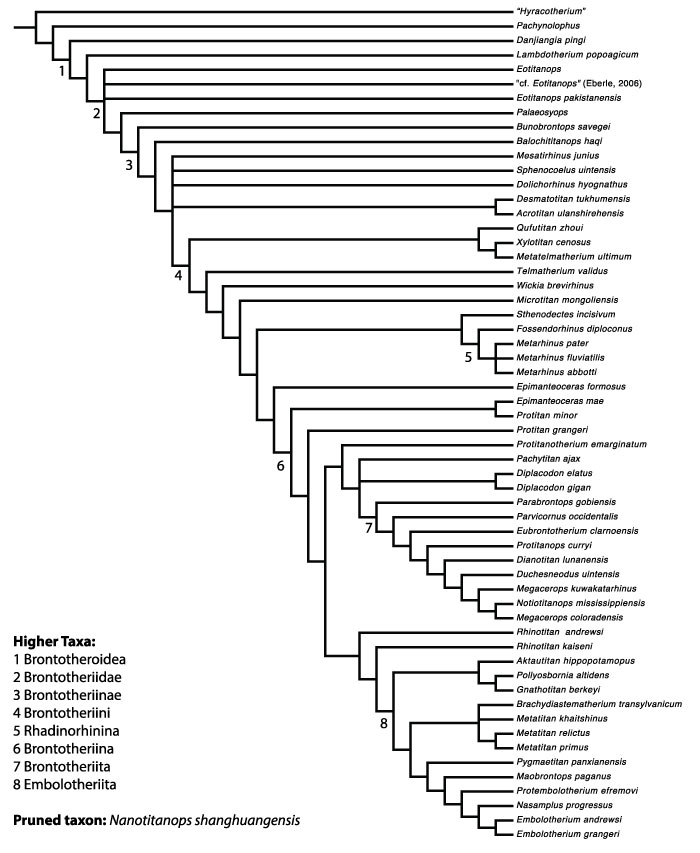APPENDIX 2
Results of expanded phylogenetic analysis results for Brontotheriidae
Like earlier equally weighted parsimony analyses of Brontheriidae, the analysis produces excessive numbers of most parsimonious trees (MPTs) (tree length = 353; CI=0.4249; RI = 0.8096) and poor resolution in the strict concensus (Figure A1), due to the unstable positions of fragmentary wildcard taxa, Nanotitanops shanghuanensis, Brachydiastematherium transylvanicum, and Notiotitanops mississippiensis (Mihlbachler 2007; 2008; 2009; Mihlbachler and Samuels 2016). Parsimony analysis in PAUP was stopped after discovery of 1,000,000 MPTs. A posteriori removal of these taxa and Maobrontops paganus Averianov et al. 2018, reveals numerous additional strictly supported relationships (Figure A2). Implied weighting searches performed in TNT discovered fewer MPTs. Searches where k=3 and k=5 produced 1485 MPTs and searches where k=6 and k=7 produced 120 MPTs and the most highly resolved strict consensus (Figure A3). A posteriori removal of one wildcard taxon, Nanotitanops shanghuangensis revealed additional strictly supported relationships among basal members of subtribe Brontotheriina (the clade consisting of brontotheres with frontonasal horns) (Figure A4).
FIGURE A1. Strict consensus tree for Brontotheriidae based on a parsimony search with equally weighted characters.

FIGURE A2. Reduced strict consensus tree for Brontotheriidae based on a parsimony search with equally weighted characters with wildcard taxa pruned a posteriori.

FIGURE A3. Strict consensus tree for Brontotheriidae based on a parsimony search with implied weighting (k=7).

FIGURE A4. Reduced strict consensus tree for Brontotheriidae based on a parsimony search with implied weighting (k=7) with wildcard taxa pruned a posteriori.


